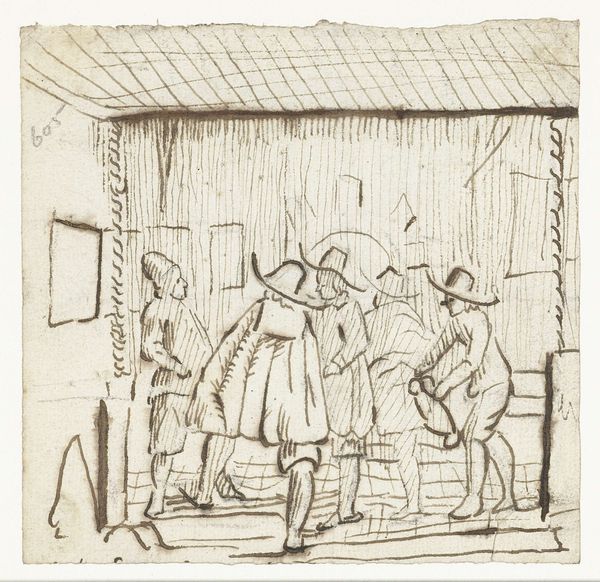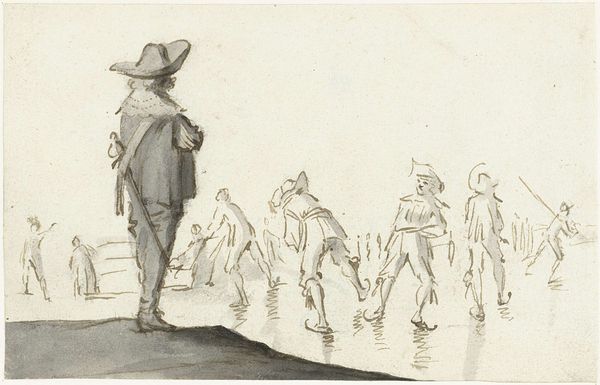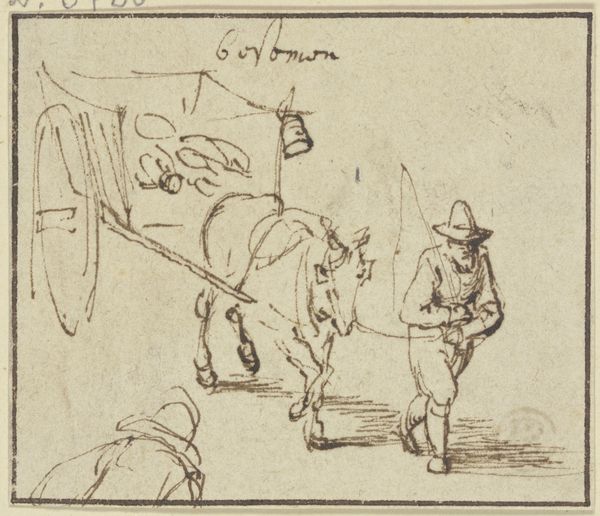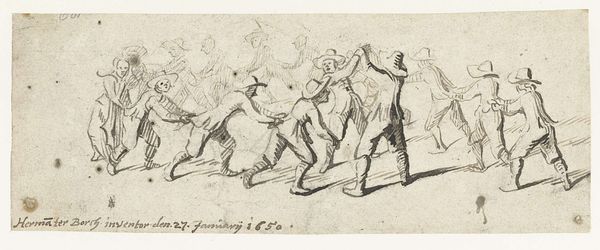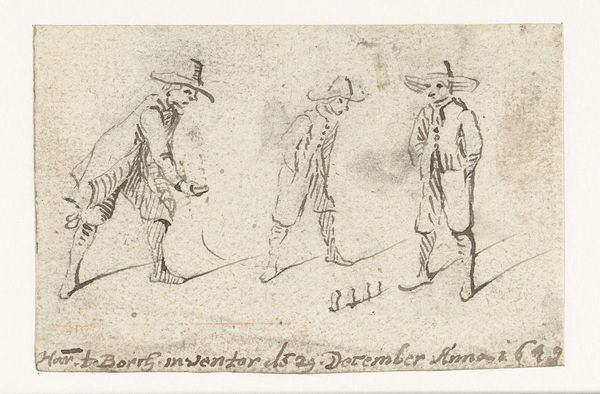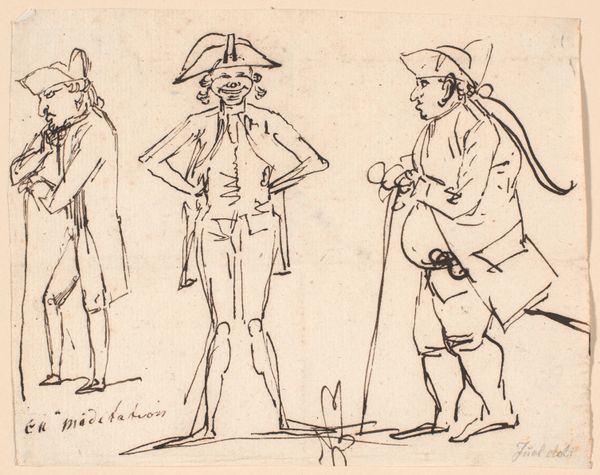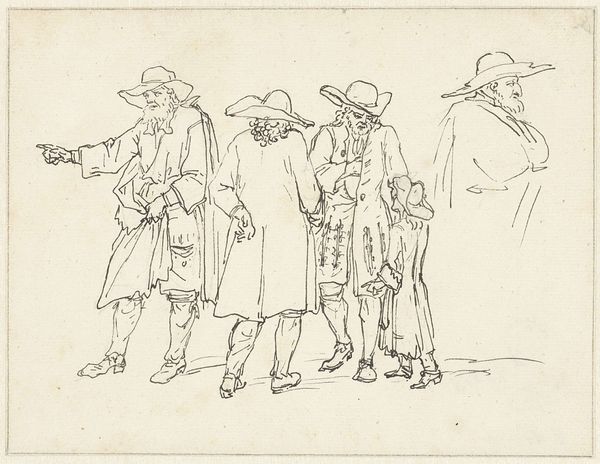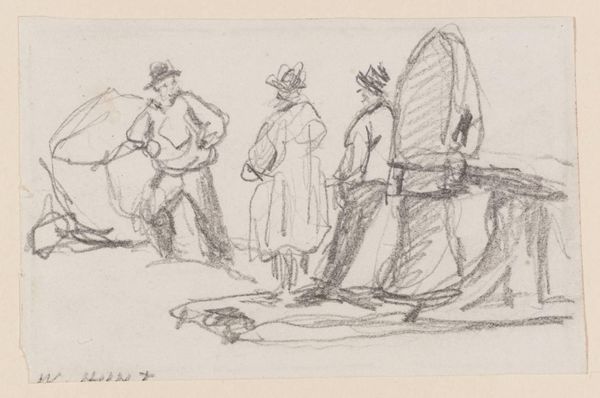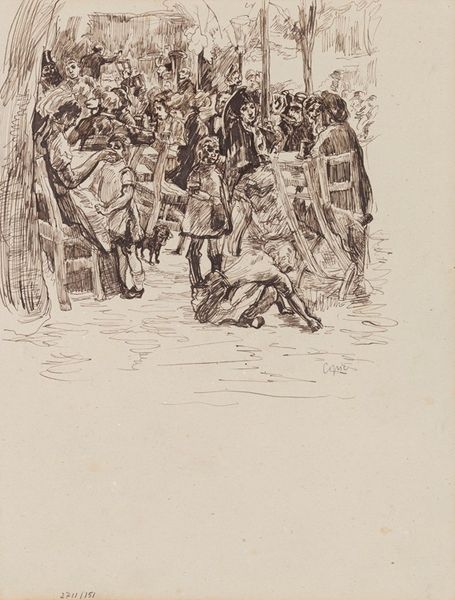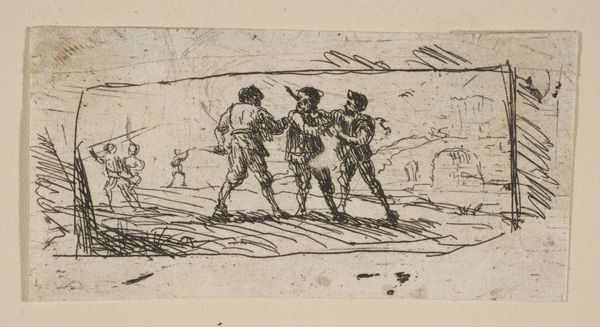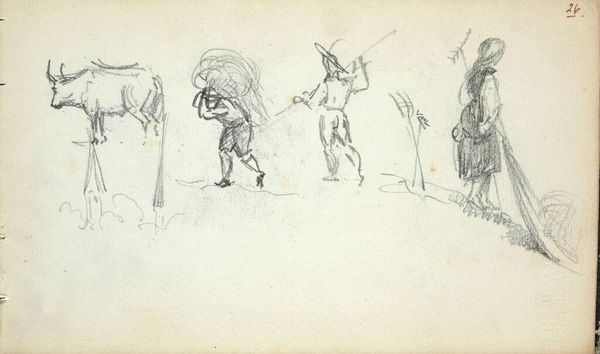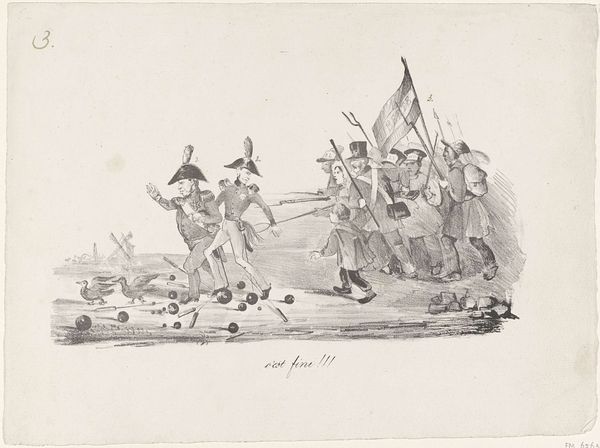
drawing, paper, ink
#
portrait
#
drawing
#
comic strip sketch
#
dutch-golden-age
#
pen sketch
#
landscape
#
figuration
#
paper
#
personal sketchbook
#
ink
#
sketchwork
#
pen-ink sketch
#
line
#
pen work
#
sketchbook drawing
#
genre-painting
#
storyboard and sketchbook work
#
sketchbook art
#
initial sketch
Dimensions: height 103 mm, width 162 mm
Copyright: Rijks Museum: Open Domain
Editor: This ink drawing on paper, titled "Vijf lopende mannen op een rij" - Five Men Walking in a Row - is attributed to Harmen ter Borch and possibly dates to 1649. I find its rough, sketchy quality so compelling, as if we're peering into the artist's private thoughts. What story do you think this piece is trying to tell? Curator: Well, the sketch's seemingly casual nature actually offers us a peek into the artistic practices of the Dutch Golden Age and Ter Borch’s engagement with contemporary society. Consider the burgeoning middle class; their self-perception and desire for representation shaped the art market. How might a quick study like this have fed into the larger, more polished portraiture Ter Borch was known for? Editor: So, you're saying this might be a preparatory study for a larger piece, exploring types and gestures? Curator: Precisely. Moreover, think about the function of art during this period. It was intertwined with social status, political messaging, and even emerging concepts of national identity. Could these figures, rendered with such understated dignity, be understood as representatives of Dutch civic virtues? Do you notice the lack of distinct individual features? Editor: That’s interesting; they could be stand-ins for a larger social commentary. I hadn’t considered that their anonymity might be deliberate. Curator: It invites speculation, doesn’t it? The "everyman," perhaps. This drawing also prompts consideration of the Rijksmuseum’s role itself. Why preserve and display such an intimate sketch? How does it shape our understanding of Ter Borch and the Dutch Golden Age? Editor: This really opens up a new perspective on the piece – thinking about not just the art, but also its role within society, both then and now. Curator: Indeed. The power of art lies in its ability to reflect and shape the world around us. And that includes reflecting how it is exhibited, or perceived at a given time.
Comments
No comments
Be the first to comment and join the conversation on the ultimate creative platform.
